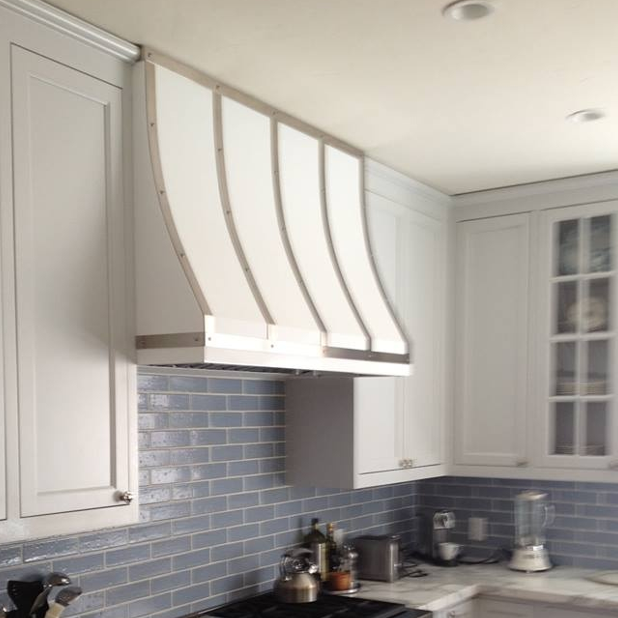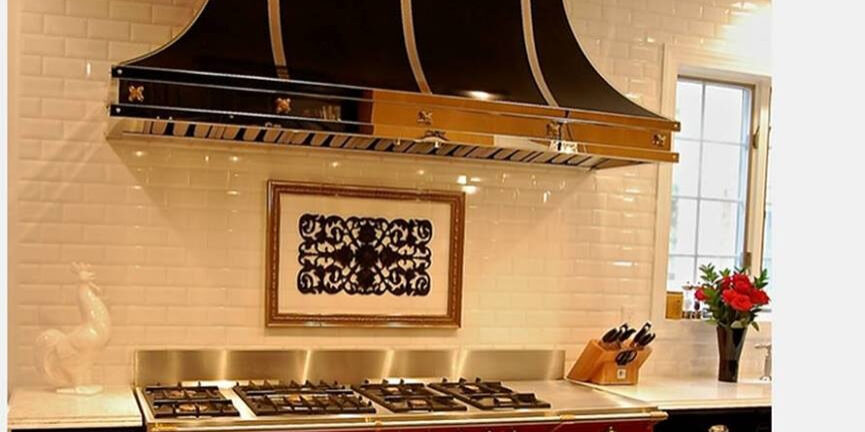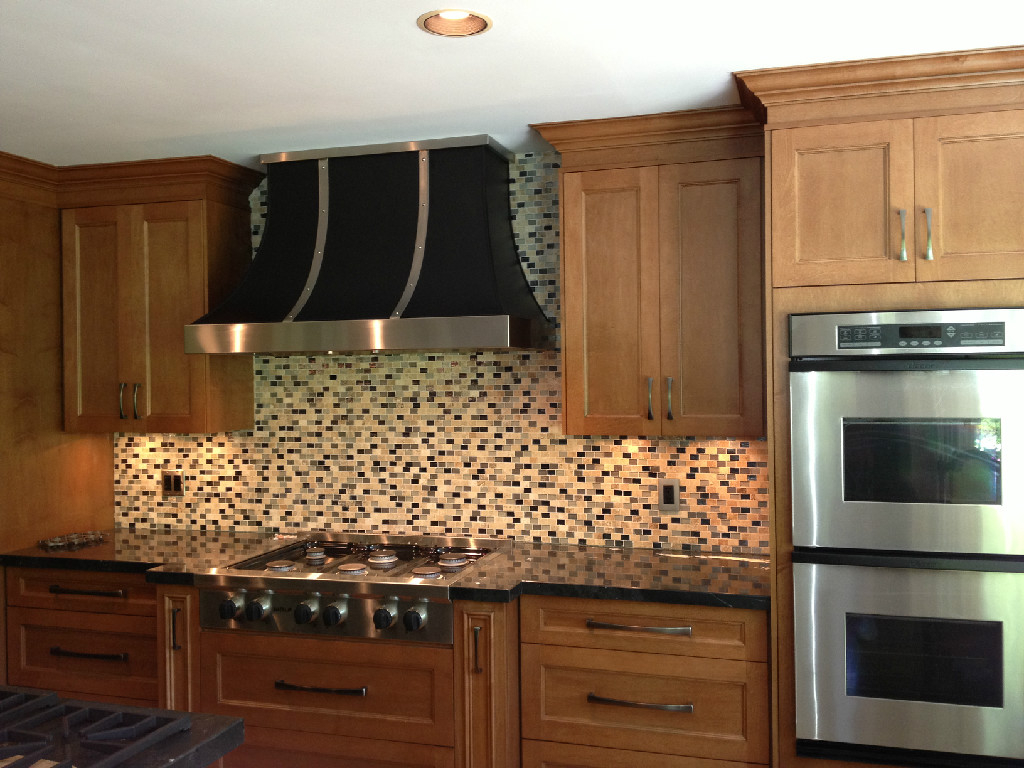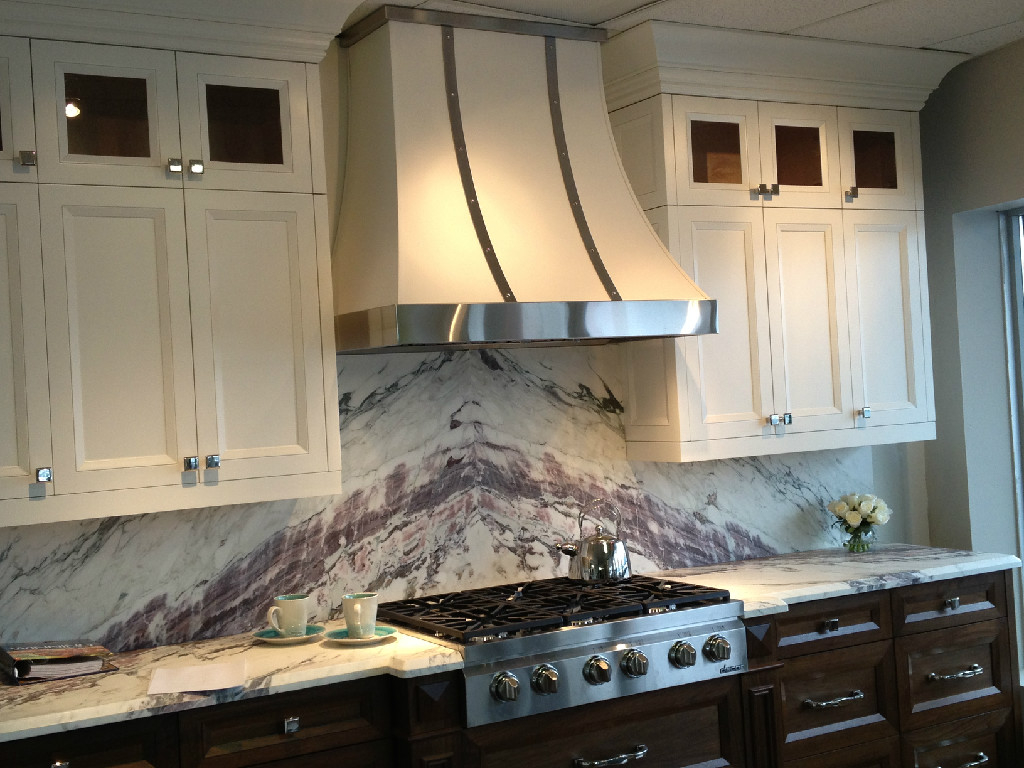
Learn What’s Inside Your Custom Range Hood
Range Hood Installation and Design Information
What type of ventilation is required for your cooking equipment?
In order to determine the proper amount of range hood airflow required for your cooking equipment, you must first know how many BTUs (British thermal units) your gas range emits. Then, with a simple calculation, you can determine the amount of CFM (cubic feet per minute) required by your range hood. For example, if your cooktop emits 90,000 BTUs you would divide 90,000 by 100 which indicates your vent hood should have a kitchen hood blower capable of exhausting 900cfm. This means that 900 CFM or more would efficiently exhaust your range.
Electric and Induction Range Tops:
For electric and induction cooktops, choose a blower with a minimum of 200 CFM per 12 inches of cooktop width. Remember, it’s always a good idea to round up vs. down.

Range Hood Height Above the Range:
What height above the range should the range hood be?
Determining the proper height for your vent hood is easy as long as you know the height of your ceiling. Let’s say, for example, that your ceilings are 9ft high, that’s 108 inches. You would then take the total of 108 inches and deduct 36 inches for the height of your range leaving you 72 inches. Then, you will need to determine how high you would like your range hood off of your cooktop. Modern-Aire recommends hanging your vent hood 30–34 inches above the cooking surface for optimal performance, so let’s just say that you have decided to hang it 33 inches above the cooking surface. You have 72 inches remaining, so deduct the 33 inches for the distance between your cooking surface and the bottom of your range hood and you now have a total hood height of 39 inches.

Range Hood Width:
What width do you need? The ideal width of your vent hood should be six inches wider than your cooking surface, therefore overhanging by three inches on either side. Having the range hood wider than the range allows for additional exhausting capture area, providing more efficient kitchen ventilation. Where space is restricted, the hood should be no less than the width of the cooking surface. Island range hoods are a bit less forgiving than wall-mounted units, requiring the additional 6 inches of capture area due to cross drafts within the room. Abiding by these recommendations will ensure optimal performance from your Modern-Aire vent hood.
Range Hood Depth:
What depth do you need? The depth of your range hood should ideally cover the cooking surface of your range from front to back. Our standard wall vent models range from 24 to 27 inches deep depending on cooking surface requirements, while our island models are a standard 27 inches depth. Modern-Aire’s liners are available in either 18 1/8 or 22 1/2 inch depths. Modern-Aire Ventilating can accommodate the custom depth and width requests. Please consult with your sales representative so they may assist you with customizing the dimensions required for your vent hood.
Kitchen Hood Style:
What style do you want? Choosing the right range hood can be like selecting the right outfit—it’s a matter of personal preference and style. Your kitchen ventilation hood will likely be one of the focal points in your kitchen, making it one of the important design elements. When deciding on a rangehood design, take several things into consideration including whether the rest of your home is traditional, contemporary, or even rustic. Also, consider the elements of color throughout your home that can add/impact material possibilities for your ventilation hood.
